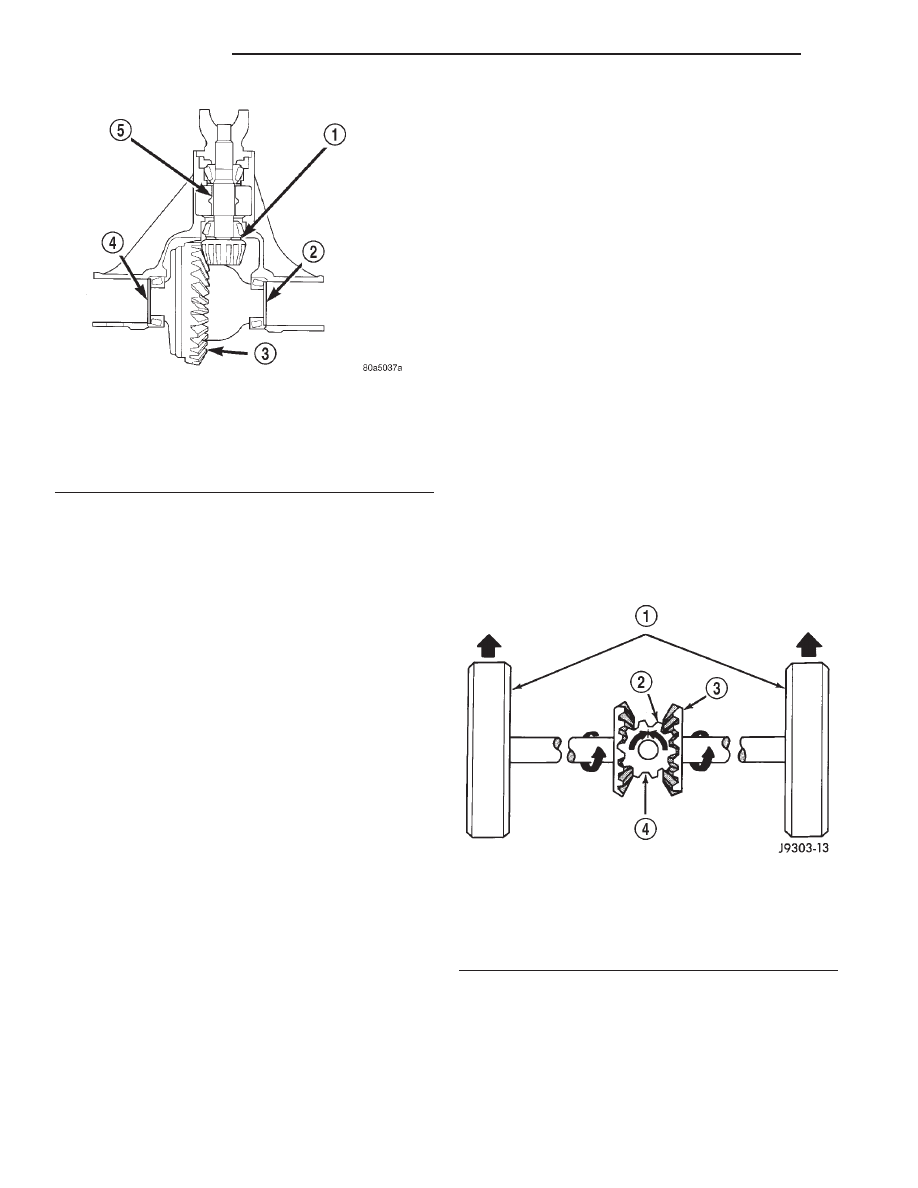Jeep Grand Cherokee WJ. Manual - part 27

through the pinion mate and side gears. The side
gears are splined to the axle shafts.
LUBRICANT
DESCRIPTION
A multi-purpose, hypoid gear lubricant which con-
forms to the following specifications should be used.
Mopar
t Hypoid Gear Lubricant conforms to all of
these specifications.
• The lubricant should have MIL–L–2105C and
API GL 5 quality specifications.
• Lubricant is a thermally stable SAE 80W–90
gear lubricant.
• Lubricant for axles intended for heavy-duty or
trailer tow use is SAE 75W–140 SYNTHETIC gear
lubricant.
Trac-lok
y differentials require the addition of
0.11L (0.25 pts.) of friction modifier to the axle lubri-
cant. The 198 RBI axle lubricant capacity for axles
equipped with a standard or Trac-lok
y differential is
1.66L (3.50 pts.) total, including the friction modifier
if necessary.
CAUTION: If axle is submerged in water, lubricant
must be replaced immediately to avoid possible
premature axle failure.
STANDARD DIFFERENTIAL
DESCRIPTION
The differential gear system divides the torque
between the axle shafts. It allows the axle shafts to
rotate at different speeds when turning corners.
Each differential side gear is splined to an axle
shaft. The pinion gears are mounted on a pinion
mate shaft and are free to rotate on the shaft. The
pinion gear is fitted in a bore in the differential case
and is positioned at a right angle to the axle shafts.
OPERATION
In operation, power flow occurs as follows:
• The pinion gear rotates the ring gear
• The ring gear (bolted to the differential case)
rotates the case
• The differential pinion gears (mounted on the
pinion mate shaft in the case) rotate the side gears
• The side gears (splined to the axle shafts) rotate
the shafts
During straight-ahead driving, the differential pin-
ion gears do not rotate on the pinion mate shaft. This
occurs because input torque applied to the gears is
divided and distributed equally between the two side
gears. As a result, the pinion gears revolve with the
pinion mate shaft but do not rotate around it (Fig. 2).
When turning corners, the outside wheel must
travel a greater distance than the inside wheel to
complete a turn. The difference must be compensated
for to prevent the tires from scuffing and skidding
through turns. To accomplish this, the differential
allows the axle shafts to turn at unequal speeds (Fig.
3). In this instance, the input torque applied to the
Fig. 1 Shim Locations
1 – PINION GEAR DEPTH SHIM
2 – DIFFERENTIAL BEARING SHIM-PINION GEAR SIDE
3 – RING GEAR
4 – DIFFERENTIAL BEARING SHIM-RING GEAR SIDE
5 – COLLAPSIBLE SPACER
Fig. 2 Differential Operation—Straight Ahead Driving
1 – IN STRAIGHT AHEAD DRIVING EACH WHEEL ROTATES AT
100% OF CASE SPEED
2 – PINION GEAR
3 – SIDE GEAR
4 – PINION GEARS ROTATE WITH CASE
3 - 54
198 RBI AXLE
WJ
DESCRIPTION AND OPERATION (Continued)